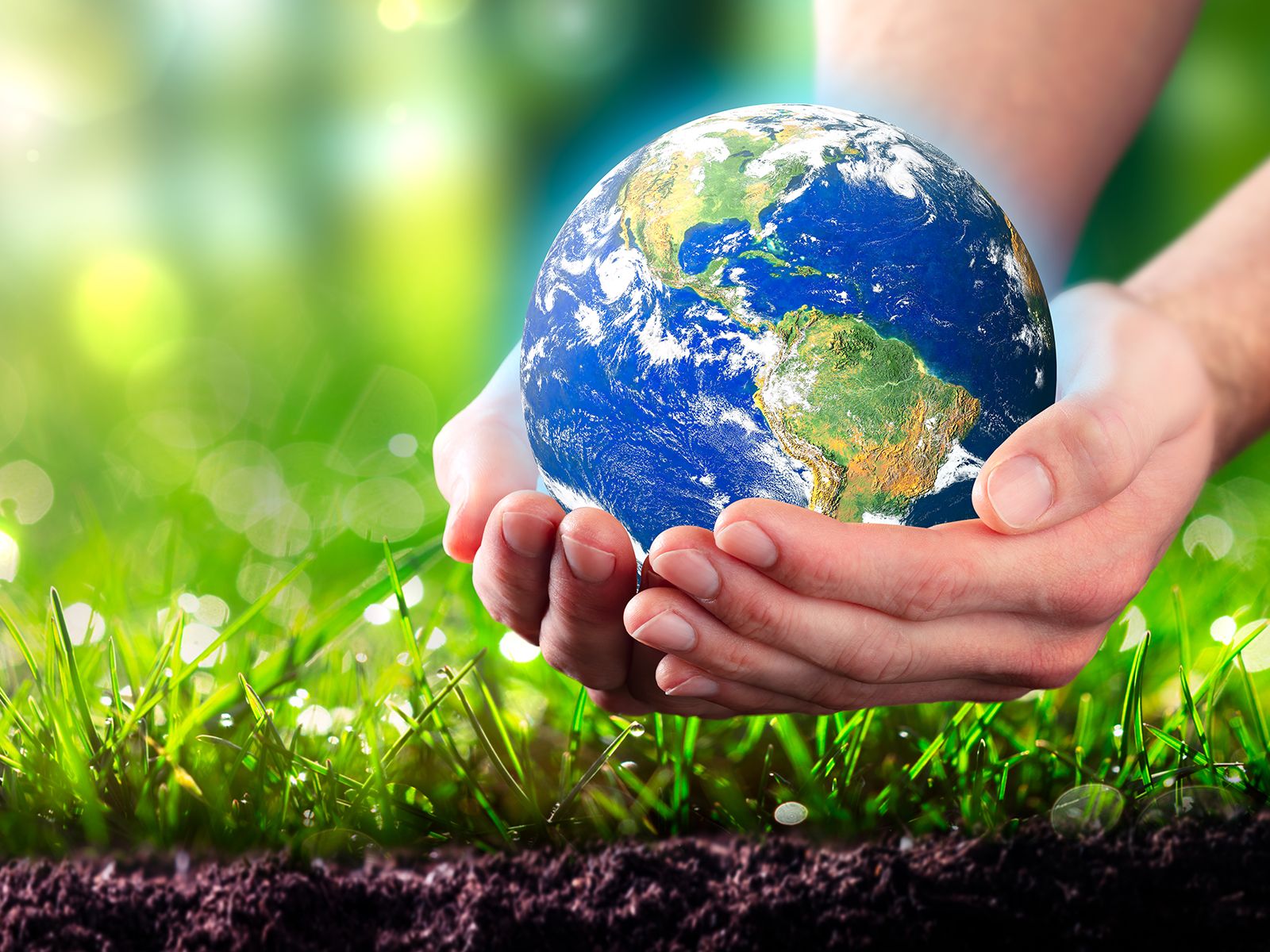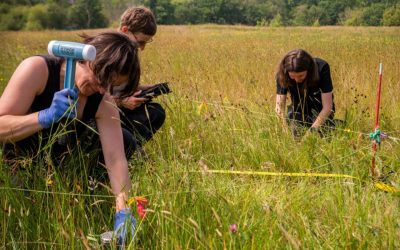Introduction
Six years have elapsed since the Sustainable Development Goals (SDGs) were founded at the United Nations Summit in New York. Soil was merely a fringe participant at this meeting, only making appearances in six of the 17 goal descriptions. This may come to some surprise, not least because of the importance of global soils for sustainable development. Since then, the paramount contributions that soils make to our lifestyles, diets, health, infrastructure, economies, ecosystems, and the wider terrestrial environment have gained increasing recognition. The role of soils for producing healthy and nutritious food, purifying water supplies, capturing and storing carbon, safeguarding energy resources, supporting critical infrastructure, providing acreage for development, and supplying raw materials is now acknowledged globally.
When the British Society of Soil Science was founded back in 1947, one of the first presentations to be given was Dr R. K. Schofield’s ‘A New Approach to Problems of Soil’. Notwithstanding the challenges outlined by Dr Schofield at the time, it is arguably the case that soils have continued to face a burgeoning agenda of challenges since this founding meeting. For example, when Dr Schofield stepped up to the podium, the world population was only a third of what it is today. Seventy-five years on, 7.8 billion people are dependent on soils to deliver vital services. However, the acreage of land impacted by climate change or degradation is also growing. Back in 2015, coincidentally whilst the SDGs were being drafted, the United Nations released a report containing the grim headline that “the majority of the world’s soil resources are in only fair, poor, or very poor condition”.
It is perhaps no surprise, then, that the face of soil science has transformed over the last century. There has been, as Dr Schofield advocated, ‘a new approach’ to tackling soils-based challenges. Yes, soil scientists are still invested in understanding the soil material – its physical, chemical, and biological make-up – but there is now a growing focus on confronting contemporary environmental challenges and developing applied “real-world” solutions.
Over the past decade, game-changing progress and innovation across the sciences – not least, in soil science – have better enabled us to confront growing environmental, societal, and economic challenges. With less than a decade left before the SDGs are set to be realized, it is a crucial time to pause, reflect, and assess these advancements.
In 2020, at the turn of the decade, I assembled a large international team of soil scientists to discuss the major progress made in soil science over the past decade, particularly around five grand challenges: climate change, food security, water security, urban development, and ecosystem biodiversity. We also constructed a timeline highlighting some of the global initiatives towards which soil science have contributed, including major guidance and recommendation documents, status reports, expert group collaborations, public awareness campaigns, and legislation. This revealed that whilst soil scientists have contributed comprehensively to recommendation reports, work is rarely translated into policy. In many ways, this inspired our final task: identifying not WHAT soil scientists should study – there are many manifestos in circulation, after all – but HOW soil scientists should approach these issues. In some respects, we were establishing what Dr Schofield may have termed “a new new approach to problems of soil”.
We were invited by the European Journal of Soil Science to submit our opinion article which was published open access and can be found here: https://onlinelibrary.wiley.com/doi/10.1111/ejss.13145
Contributions to Five Grand Challenges
Our paper showcases transformative soils research from the past decade, focusing on five grand challenges including climate change, food and water security, urban development, and ecosystem functioning and biodiversity. Here, we will spotlight some of the key advancements that we highlight in the article:
Climate change
- Novel techniques and capabilities have been developed to upscale soil carbon measurements, such as the use of remote sensing, unmanned aerial vehicles (UAVs), and hyperspectral imagery.
- Low-cost, scientifically validated, and non-destructive analysers have been developed to assess topsoil and subsoil carbon stocks.
- New-generation dynamic carbon models have been assembled to estimate the potential for soils to sequester carbon for different climate and land-use scenarios.
Food security
- There has been a shift from considering soils solely as a food production resource towards the importance of soils for the delivery of multiple goals.
- The need to deliver global food security has led to the development of precision cropping technologies and regenerative farming practices which can enhance soil quality, enrich soil biomes, and minimize crop disease.
- Advancements in our understanding of soil biology have shown that maintaining soil organic carbon is critical for the microbiological relationships that develop between soils and roots, and therefore for plant productivity in agroecosystems.
Water security
- Lots of work has explored ways of boosting water use efficiency, blending long-established methods such as mulching and cover cropping with innovations such as using wetting agents (surfactants) and wax-degrading bacteria to reduce water repellence.
- Strategies to prevent groundwater depletion have been tested, including the use of water harvesting structures, increasing infiltration via wells, and using GIS to identify the best areas to enhance groundwater recharge potential.
- Major advances in how we obtain data and develop models mean that researchers are now better equipped to quantity water scarcity and vulnerability, and machine learning methods can now forecast the effect of environmental and climate change on future water fluxes.
Urban development
- Novel bioremediation systems have been developed to detect and manage pollution and contamination in urban environments.
- Nature-based solutions such as planting trees, landscaping parks, and creating wetlands have been explored as ways of minimizing soil degradation in urban spaces, as well as intercepting dust and toxins, sequestering carbon, and buffering flooding.
- Studies have demonstrated that technosols, constructed from city waste, can provide multiple ecosystem services and can contribute to urban circular economies.
Ecosystem functioning and biodiversity
- Monitoring and modelling of soil ecosystems are starting to become better integrated into natural capital and ecosystem frameworks, such as the System for Environmental and Economic Accounts (SEEA).
- Rapid advances in biological research over the past decade, notably in omics and sequencing, have transformed our understanding of the organisms that live in soil, and allow us to retrieve their full genomes.
- Biomedical and biotechnological innovations have been developed to uncover previously unknown soil microbial species and functions, which allow us to account for the roles of soil biodiversity in regulating ecosystem services such as nutrient cycling and storage.
Where does soil science go between now and 2030?
With less than a decade to go before the SDGs are intended to be achieved, and with many grand challenges still outstanding, it is timely to ask: what should soil scientists study between now and 2030? Many papers in recent years have attempted to answer this, prescribing a vast array of research topics and foci areas. In short, there is enough to keep soil scientists busy for the foreseeable future! However, research only goes so far in creating real-world impact. In our paper therefore, rather than adding to an already lengthy manifesto for future soils research, we instead opted to suggest how soil scientists can best ensure that their activities over this decade can support global efforts to achieve sustainable development.
We suggested three new ‘ways of working’ which are summarised below:
1. Implementing soil science into policy
As part of our look back over the past decade of soil science, we put together a timeline of some of the global initiatives towards which soil scientists have recently contributed (see Figure 1, below). We found that the majority of these contributions have either focused on assembling evidence for reports (e.g., State of the World’s Soils) or presenting recommendations on the most effective soil management strategies. Interestingly, there were very few examples where soil science had directly contributed to concrete policy and legislation. Translating soil science into policy is essential if we are to achieve sustainable development by 2030. Soil scientists should promote closer and more sustained working relationships with policy makers, and take an active role in raising public awareness about the challenges facing soils.
Figure 1: Contributions of soil science to international policy and legislation, guidance and recommendation reports, status reports, and collaboration and public awareness campaigns across five major environmental challenges over the past decade. SOURCE: Evans et al. (2021)
2. Integrating research agendas
Achieving all 17 of the SDGs is a herculean task, and arguably one of the greatest challenges we face over the next decade is coordinating action so that what we do to achieve one goal doesn’t outcompete or cancel out our efforts to achieve others. We will need to identify ‘win-wins’ and synergies between different goals, and learn about the potential trade-offs along the way. Avoiding research duplication is a key priority here, especially considering the constraints placed upon soil science departments in terms of time and money allocation. Soil scientists will need to establish new homes inside more strategic, collaborative, and interdisciplinary networks, such as the Critical Zone Observatories, and help to exchange methods, resources, data analysis toolkits, and computer code using open cloud innovations.
3. Reactive and proactive soil science
If soil science is to support and help achieve national and global sustainability agenda, it is vital that researchers take both a reactive and proactive approach. This implies a balance between responding reactively to existing challenges (e.g., monitoring soil erosion) and forecasting how soils may respond to future disturbances (e.g., extreme weather events). This will entail fostering better links between the monitoring and modelling communities, so that model-derived data can address the inevitable limitations of observation-based work, while empirical data can help to develop and validate models.
Read the full text here: https://onlinelibrary.wiley.com/doi/10.1111/ejss.13145
Evans, D. L., Janes-Bassett, V., Borrelli, P., Chenu, C., Ferreira, C. S. S., Griffiths, R. I., Kalantari, Z., Keesstra, S., Lal, R., Panagos, P., Robinson, D. A., Seifollahi-Aghmiuni, S., Smith, P., Steenhuis, T. S., Thomas, A., & Visser, S. M. (2021). Sustainable futures over the next decade are rooted in soil science. European Journal of Soil Science, 1– 16. https://doi.org/10.1111/ejss.13145
The views expressed in this blog do not necessarily reflect the views of the British Society of Soil Science.






